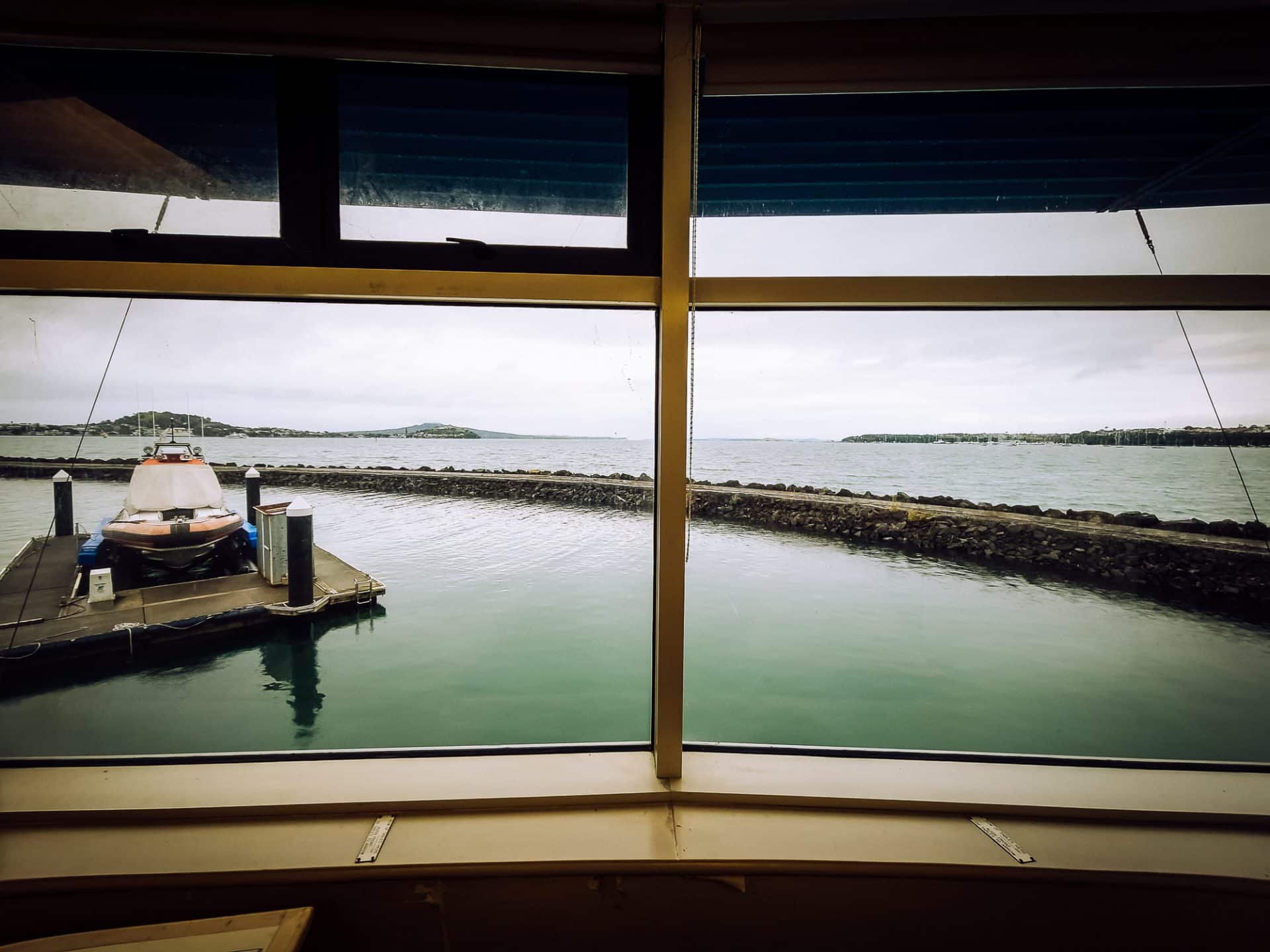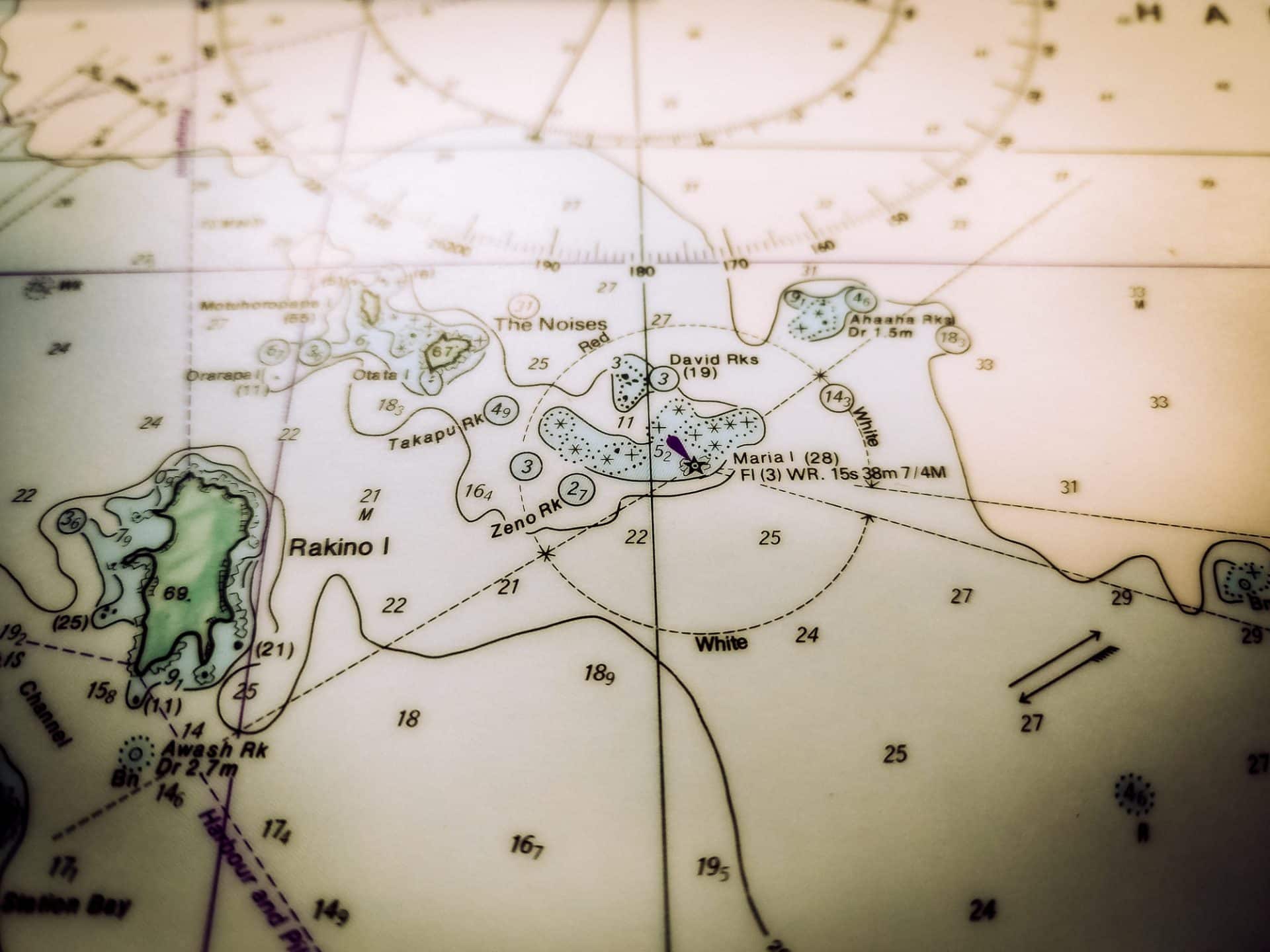It’s my nature to dive into things with both feet. So, as I got back into fishing, the notion of boating also came up, and, while I had grown up around boats, and could quite happily take over one, should the need arise, I thought it would be a good idea to go get some formal introduction to the world of safe boating practices in New Zealand.
I had also decided to join up to the Coastguard. Even when out with my brothers, or others in small craft, my Coastguard membership covers the boat I am in, which, is probably a good thing on some of the smaller, cheaper craft I might find myself in.
In addition, though, there are long-term plans for a boat of my own, and with the Coastguard membership came a discount to attend their ‘Day Skipper’ course – an introduction to being in charge of a boat in NZ waters. Sounded like a logical choice!
The course was held at the Auckland Marine Rescue Centre – this is the home base for the Auckland Harbourmaster, Maritime Police, Coastguard and Surf Lifesaving.
Painfully though – there is no free parking. There is paid parking, which will cost you around $18 per day, in what seems like a private car park? I was not quite sure what was going on there. It seemed to be a bit of a captive audience.
The classrooms provide a great view, given the subject, and multiple times during the day we stopped to check out the Harbourmaster headed in or out and various comings and goings from Helicopters.

The Course
The course is broken up into two days. Though I really wonder if it might have been able to be shrunk into just the one. I will talk more about this in my final thoughts down below.
Content-wise, it covered the basics everyone should probably know before they take control of a boat in local waters. This includes:
- The components of a boat and its equipment – i.e. what to call what
- Basic boat handling techniques – how an external motor, internal motor and yacht differ
- Use of navigational charts – not maps, as I was corrected once 😉
- Basic tide and weather terminology – how not to get stuck at low tide
- Navigational marks – and give way rules!
- Maritime Rules and Regulations – what you need to do, what you can’t do
- The causes of and preventative actions to be taken in emergency situations – when things go wrong
- Common marine knots and their application – an arbour, figure 8, etc
There is a workbook provided, as well as an exercise book (that I think we were meant to use as a guide during the course, but kind of just got left for us to do, if we wanted, with no real marks/requirement to do so?)
In addition, additional handouts are provided, and the tutor was working on a whiteboard for most of the course. There is a very dated video shown at the end, that serves as a summary of the course, though, seemed a little redundant on the whole.
At the end, you do a test to show competence. If you pay attention to the course, it’s a fairly simple exercise – though I managed to turn around my East and West at one stage, and that cost me a point. Simple, silly mistake!
Thoughts and Observations
Who should take this course?
Everyone. Everyone who plans on taking charge of a boating vessel should attend this course. I couldn’t help but notice that the attendees were a pretty narrow demographic in regards to Aucklands Cultural Diversity. Of course, this course is only available in English, and I could see anyone with English as a second language struggling with some of the technical nature that is presented.
Regardless though, much like a car licence or firearms licence, I strongly think a course like this should be mandatory for any boat owner or skipper.
How could you make it more appealing?
I was keen to take a course, as I have been running courses for years, but was keen to attend one and get back into learning mode a bit, however, with my background I was also obviously going to be observing from a presenting and facilitating angle as well.
Also – remember, I am framing this with the thought that everyone should be attending this course, and what could be done to help make that more likely and appealing (bar making it mandatory). Though, again, I think it should be mandatory and will be at some point in the future.
It could be one day
There was a fair bit of downtime, with stories not directly related to the subject and some of the content could actually have been moved into pre-study in order to condense and shorten the course. Much like the firearms licencing course – where attendees are expected to have already studied the code, as well as completed the pre-course learning materials available online. So when they turn up, they could already have a basic understanding of the terminology, essential rules and so on already in their heads.
This frees the tutor up to focus on testing understanding, refining understanding (in my case the seven rules of firearms safety, in the maritime side of things – the right of way and meanings of markers) and sharing specific, core knowledge directly related to the needs of day skippers.
Focus down on the core competencies required for safe boating
While I enjoyed the majority of the subjects covered, I don’t know, if (again remembering my framing for this discussion) the origin of Longitudinal and Latiduianal (i.e. its history) would be needed. The knot-tying was again, interesting – but realistically was short, almost token, and likely could be a separate, more practical course for those interested.
Again, I think by trying to condense and distil the leaning down to the essentials and forcing it into a tight and shorter package, there would be a little more motivation to get in there and get it done.
Core elements, that, to be fair I have little to no understanding of prior to the course – were things like the right of way rules in regards to powered boats, sailboats, freight ships and so on. As well as what the beacons around the place actually mean. This is probably one of the more important safety aspects that need to be focused on, as well as the key items that every boat needs to have on it. This actually brings me to an interesting observation – of the key safety items that were suggested to be on every boat – a first aid kit wasn’t one of them.
Why no first aid kit?
I am not sure why a first aid kit wouldn’t be on a list of essential items to take with you. I realise I have likely been exposed to, and focus on this sort of stuff, but it seemed a really strange omission – it almost seemed as it was felt there wasn’t much risk that might require it.
I am not generally going anywhere without some sort of kit on me. It scales obviously, depending on where I am going1 – so in a remote environment like the sea, I would think/hope most people would have something as well.
First aid training was briefly mentioned, but not really to the amount I would have expected. How to deal with hypothermia was briefly covered, but not drowning, or what might happen if you managed to severely cut yourself, say with a knife, gaff or get something trapped in a winch or windlass. I think a good option would be to strongly suggest someone on the boat should probably have some training – which would also lead nicely into one of the many first-aid courses that are out there!

Add in local fishing rules
Now, I realise, that not everyone going boating is fishing. But then, not everyone getting a firearms licence is going hunting either – however, I would be tempted to say a majority of people are – and it could be one chance to get in front of people and make sure they both understand the rules, understand the repercussions of not complying with them, and hopefully, maybe a little idealistically, understand a bit more about the bigger picture of conservation and looking after the seas for future generations.
Incidentally – I take it we are all aware of the recent updates?
Demographics
Another observation, and one that I am trying to word carefully – was that it was a fairly ‘undiverse’ group of people there. Which, much like one of the challenges I have faced with the firearms licencing, is what to do with the large (Auckland) groups of people who are not as fluent in English as I might be. It’s arrogant and borderline bigoted to simply state that people should learn the language commonly used – as the right of way rules or signage are fairly independent of what your preferred language is.
I realise this is probably more related to class rather than race – this was a two-day course, for a not-insignificant amount of money, that is not mandatory. For someone with a small tiller boat, who really is heading out fishing in order to feed the family more economically, it simply wouldn’t be on the radar.
But don’t get me wrong
Overall, the course was great, and I would highly recommend it to everyone. The coastguard is spreading the good word in regards to maritime safety, and we need more of it. I learnt a lot, and now need to keep myself fresh on the ‘give way’ rules and signage – though – am also aware that a lot of people I am likely to come across out in the harbour are likely totally unaware of the rules.
Maybe it’s time we did something about that?
extra wound packing for the shooting range, for example ↩

